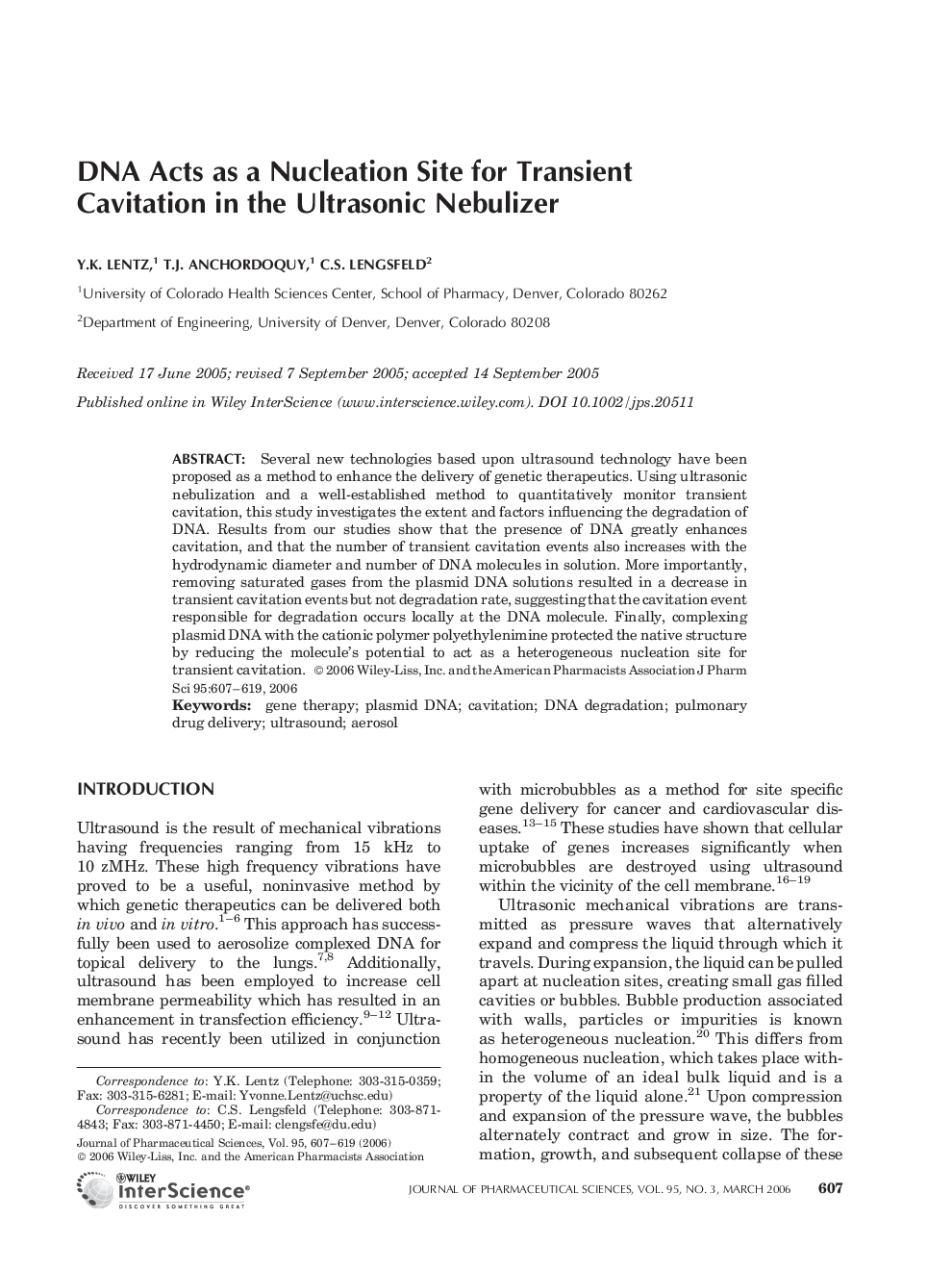| Article ID | Journal | Published Year | Pages | File Type |
|---|---|---|---|---|
| 2488172 | Journal of Pharmaceutical Sciences | 2006 | 13 Pages |
Abstract
Several new technologies based upon ultrasound technology have been proposed as a method to enhance the delivery of genetic therapeutics. Using ultrasonic nebulization and a well-established method to quantitatively monitor transient cavitation, this study investigates the extent and factors influencing the degradation of DNA. Results from our studies show that the presence of DNA greatly enhances cavitation, and that the number of transient cavitation events also increases with the hydrodynamic diameter and number of DNA molecules in solution. More importantly, removing saturated gases from the plasmid DNA solutions resulted in a decrease in transient cavitation events but not degradation rate, suggesting that the cavitation event responsible for degradation occurs locally at the DNA molecule. Finally, complexing plasmid DNA with the cationic polymer polyethylenimine protected the native structure by reducing the molecule's potential to act as a heterogeneous nucleation site for transient cavitation. © 2006 Wiley-Liss, Inc. and the American Pharmacists Association.
Related Topics
Health Sciences
Pharmacology, Toxicology and Pharmaceutical Science
Drug Discovery
Authors
Y.K. Lentz, T.J. Anchordoquy, C.S. Lengsfeld,
